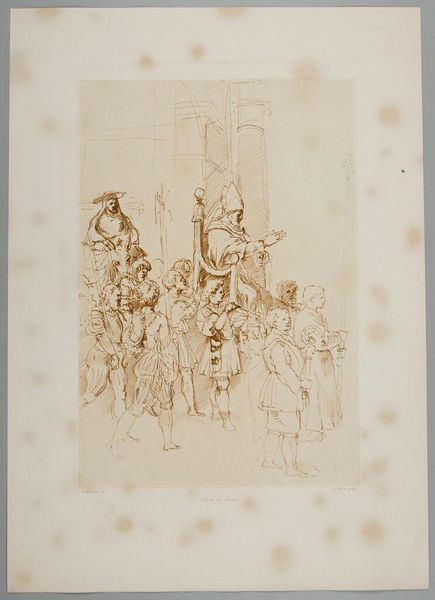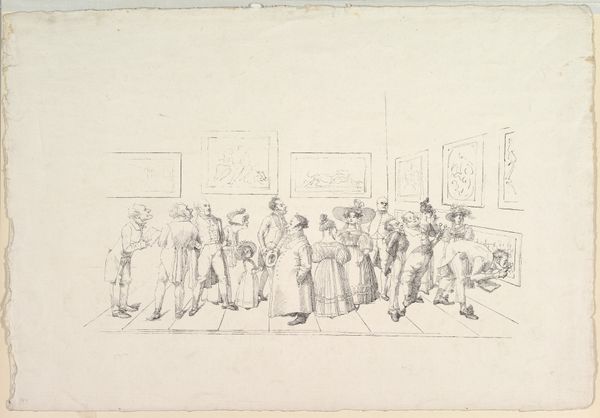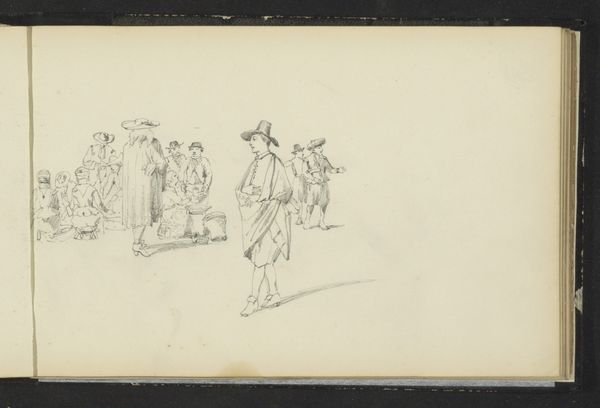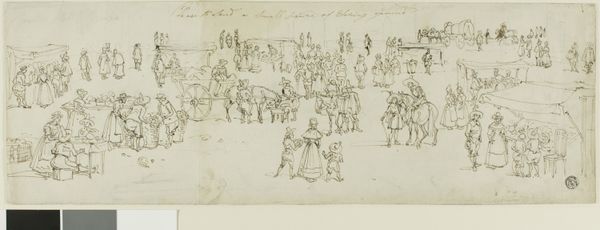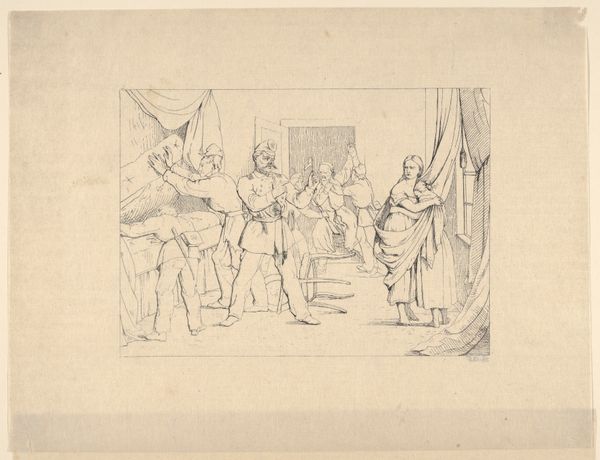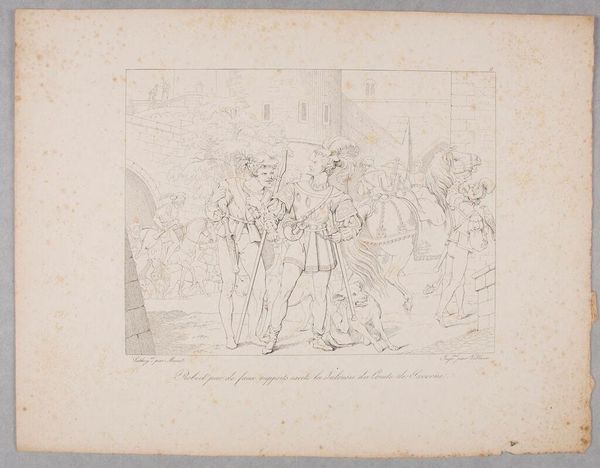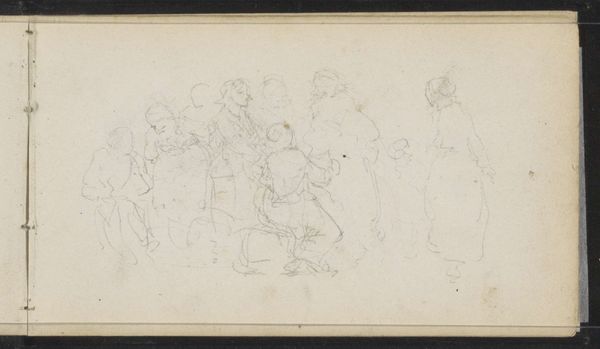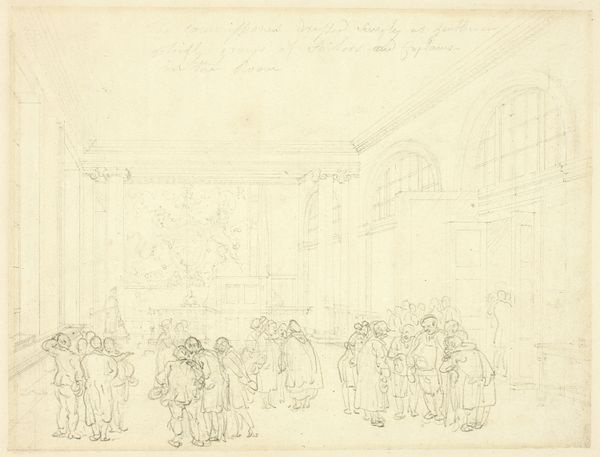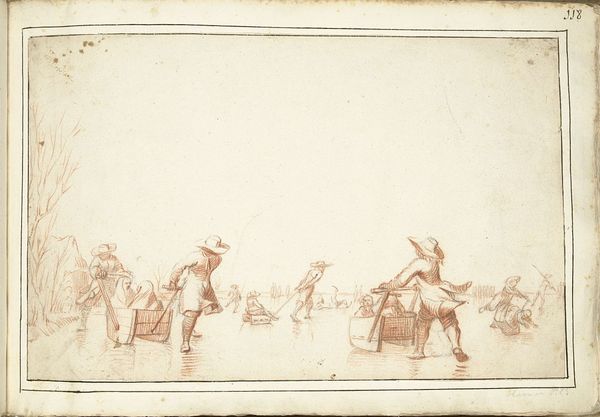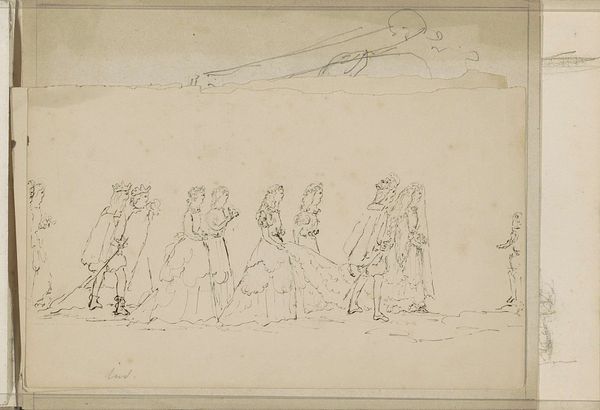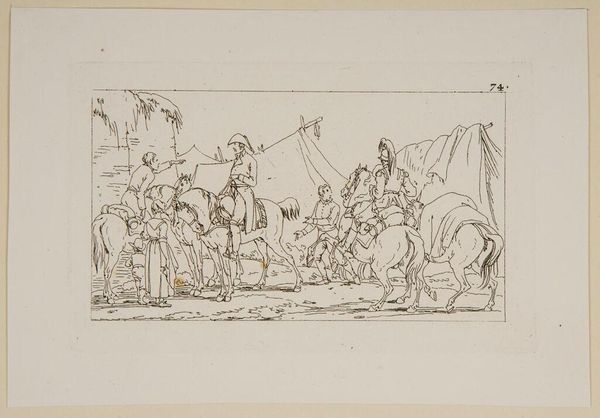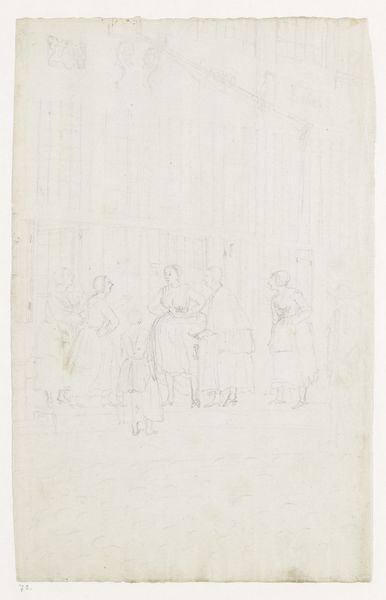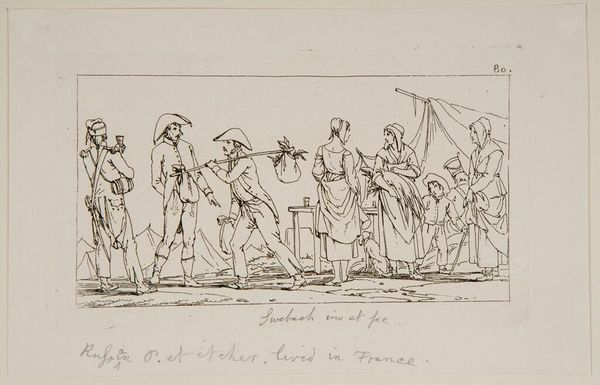
Turkish ballet divertissement, finale, Soliman II 1726 - 1782
0:00
0:00
drawing, watercolor
#
drawing
#
baroque
#
figuration
#
watercolor
#
history-painting
Dimensions: 262 mm (height) x 417 mm (width) (bladmaal)
Curator: At first glance, the drawing, seemingly unfinished, emits a delicate air, almost ephemeral, don’t you agree? Editor: Yes, quite so. This is a watercolor and drawing on paper by Peter Cramer. The title, "Turkish ballet divertissement, finale, Soliman II," transports us to an era captivated by Ottoman exoticism. It resides here, in the Statens Museum for Kunst. Curator: Indeed. Note the composition – a stark contrast between the airy, undefined space above and the meticulous figures occupying the lower register. The limited color palette reinforces the sketch-like quality, drawing our attention to the line work. Observe the gestural quality—quick strokes capture movement and emotion despite the seeming lack of detail. Editor: And consider the context. The Baroque period reveled in spectacle and grand narratives. This drawing, likely a preparatory sketch, provides a glimpse into the process of creating such elaborate performances. The reference to "Soliman II" implies an orientalist fascination common in European courts, appropriating and re-imagining Turkish culture for entertainment. It speaks to the power dynamics of representation, the 'us' versus 'them' inherent in these artistic depictions. Curator: The beauty here, for me, lies in this very tension—the intersection of rigorous structure implied by the architecture and the fluid spontaneity of the figures in motion. Look at the repetition of forms—the curvature of the costumes mirrored in the arched gateway. These visual rhymes establish rhythm and cohesion. Editor: Yet, this seeming harmony masks the reality of cultural appropriation. While admiring the aesthetics, we must confront the historical implications of staging a "Turkish ballet" through a European lens, reinforcing stereotypes and consolidating colonial viewpoints. Curator: Absolutely. And still, there is that elusive aesthetic power, an undeniably evocative representation regardless of what political statement it does or doesn't mean to express. Editor: A complex intersection of beauty, politics and history. Thank you for these interesting considerations.
Comments
No comments
Be the first to comment and join the conversation on the ultimate creative platform.
